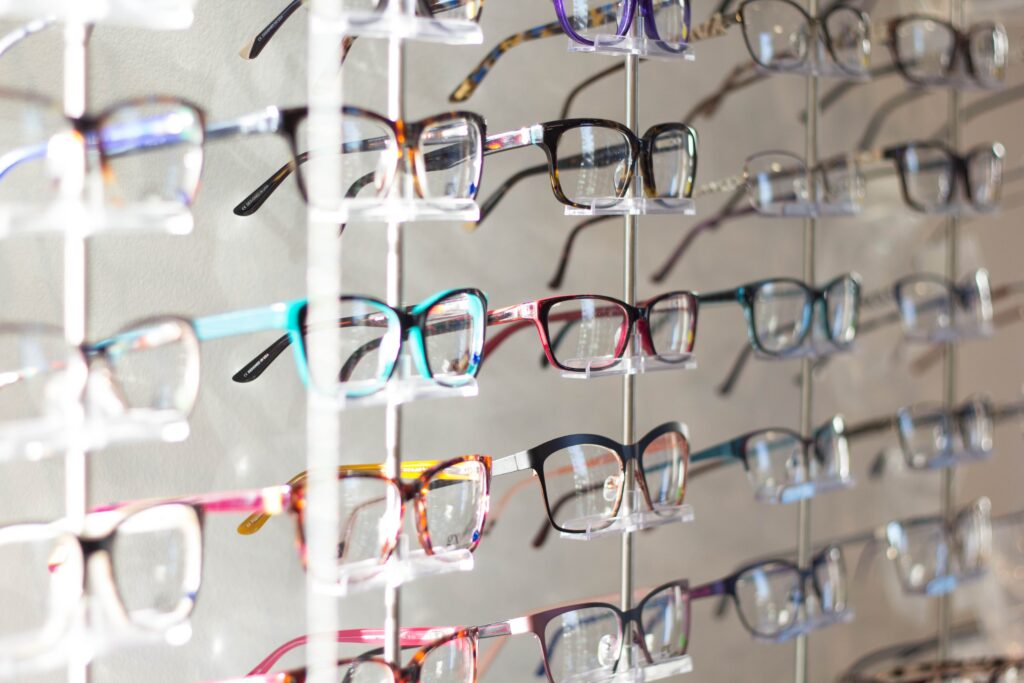What is the index of eyeglass lenses?
In everyday life, eyeglasses serve as indispensable tools for vision correction for many individuals. However, have you ever pondered over the significant number concealed within eyeglass lenses, known as the index? This number wields a profound impact on the functionality and performance of eyeglasses. In this article, we delve into the significance of the refractive index of eyeglass lenses and its role in shaping our visual world.
Common Eyeglass Indices
1.50 Index: Suitable for Low Myopia
Lenses with a refractive index of 1.50 are one of the most common choices, known for their budget-friendly pricing. They are suitable for individuals with low myopia, typically ranging from around -1.00 to -3.00 diopters of nearsightedness. These lenses are relatively thicker, but within this range, the thickness doesn’t significantly impact appearance or comfort.
1.60 Index: Suitable for Mild to Moderate Myopia
Lenses with a refractive index of 1.60 are thinner than those with a 1.50 refractive index, making them suitable for patients with mild to moderate myopia. They are generally recommended for prescriptions ranging from around -3.00 to -6.00 diopters of nearsightedness. The higher refractive index of these lenses results in thinner lenses while maintaining effective visual correction.
1.67 Index: Suitable for Moderate to High Myopia
Lenses with a refractive index of 1.67 are designed for individuals with moderate to high myopia, typically ranging from around -6.00 to -10.00 diopters of nearsightedness. These lenses maintain thinness even for higher prescriptions, reducing the weight of the frames and providing a more comfortable wearing experience.
1.74 Index: Suitable for High Myopia
Lenses with a refractive index of 1.74 are intended for individuals with high myopia, typically above -10.00 diopters of nearsightedness. These lenses possess the highest refractive index, enabling thin lens designs even for extremely high prescriptions, thereby reducing weight and thickness.

Relationship Between Thin Lenses and Index
There is a close relationship between high refractive index lenses and thin lenses. High refractive index lenses are crafted from materials with a high refractive index, meaning that light bends more within the lens. This characteristic allows high refractive index lenses to achieve reduced thickness while maintaining the same level of visual correction. Consequently, high refractive index lenses are particularly suitable for individuals requiring high-degree correction or dealing with severe nearsightedness.
Impact of Index on Lens Weight
Refractive index directly impacts lens weight. The higher refractive index in a lens causes light to refract more, resulting in the need for less material to achieve the same visual correction. This feature renders high refractive index lenses lighter and more compact. Conversely, low refractive index lenses may feel bulkier due to the requirement for more material.
Lightweight Nature and Comfort of High Refractive Index Lenses
The lightweight nature of high refractive index lenses contributes to enhanced wearer comfort. With reduced lens thickness, the overall weight of the lens decreases, alleviating pressure on the bridge of the nose. This quality makes high refractive index lenses an excellent choice for extended wear, delivering a more comfortable experience and minimizing discomfort.
Optical Effects and Index
There is a close connection between lens refractive index and optical effects. The refractive index determines how much light bends as it travels through the lens. High refractive index lenses can effectively focus light, reducing distortion at the lens edges. This means that high refractive index lenses can provide a more authentic and clear visual experience, enhancing the clarity of surrounding objects and minimizing edge distortion.
Personalized Selection
Personalized selection is crucial when choosing lens refractive index. I recommend considering your own visual needs, comfort requirements, and aesthetic preferences. For individuals requiring higher degrees of correction, high refractive index lenses might be more suitable as they can provide better visual correction in thinner lenses. However, comfort is also essential, so a balanced approach is needed when making your choice.

Summary
Refractive index plays a significant role in eyeglass lenses, directly influencing visual effects and comfort. When choosing eyeglass lenses, considering the impact of refractive index is key. High refractive index lenses offer a more genuine visual experience with reduced edge.





